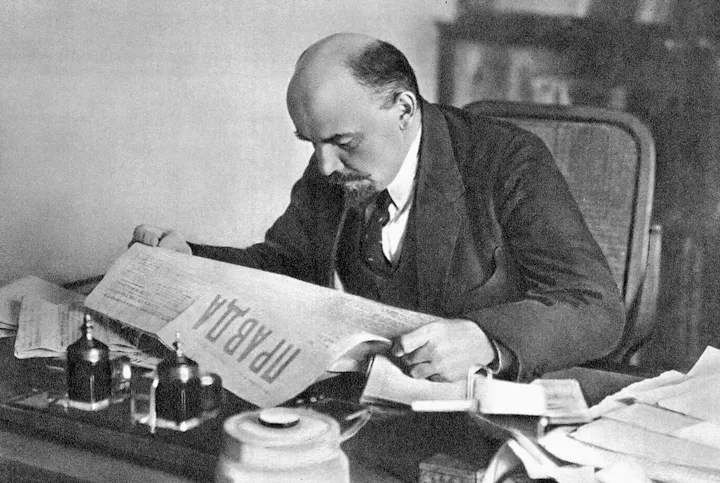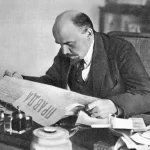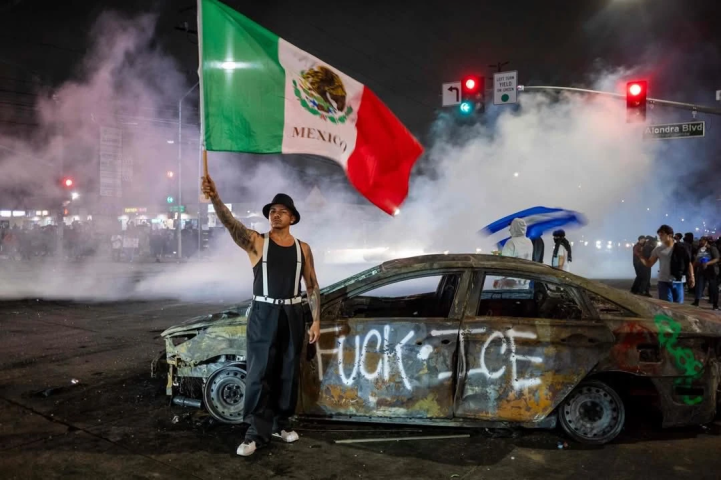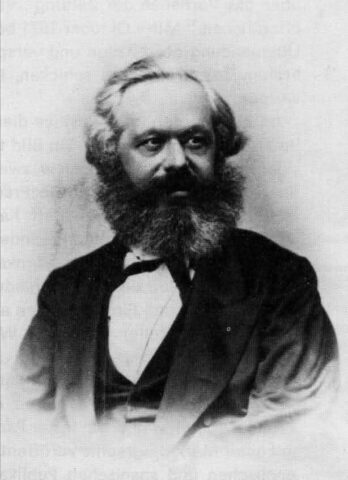
Sunday, 03 March 2024
Vladimir Lenin, leader of the 1917 Russian Revolution, is one of history’s most well-known figures, and one of its most maligned. Mainstream culture vilifies him as a despot.
But how many of the people who castigate him and deride his legacy have read his works? Five texts help cut through the myths and highlight what he really stood for: a society freed, as he wrote in The State and Revolution, “from capitalist slavery, from the untold horrors, savagery, absurdities, and infamies of capitalist exploitation”.
What is to be done? (1901)
In the last years of the nineteenth century, as Lenin approached his 30th birthday, all hell broke loose in Russia. Thousands of students participating in a national student strike in 1899 were treated appallingly by the police and government, but brutal repression could not prevent the movement from flaring up again and again. In 1901 tens of thousands of workers across Russia joined in protests and riots, and several times drove the police out of the demonstrations. Lenin was in awe.
The inadequacies of the revolutionary movement stood out starkly against this backdrop. Meetings were regularly smashed up by police and networks destroyed by arrests. Multiple political currents strove for supremacy with no real way of discussing their ideas. In his own words, Lenin “suffered painfully and acutely from the realisation that we were acting as amateurs”. So he got to work.
His key work of this time, the hastily written What is to be done?, was a call for revolutionaries to rise to the moment. They needed robust methods of underground communication, and networks that could withstand arrests. They needed a mass, working-class party that could guide the revolutionary movement.
Lenin argued against those who attempted to limit the workers’ movement to immediate concerns—factory conditions, state repression and police brutality—and fought for a Marxist party that acted as “the tribune of the people … able to react to every manifestation of tyranny and oppression, no matter where it appears”.
Imperialism, the Highest Stage of Capitalism (1916-17)
To the question of what the working class should offer an imperialist war, the international socialist movement gave the answer: “not one man, not one penny”. But when Germany declared war on Russia in August 1914, the German Social Democratic Party, the leading party of European socialism, announced that its parliamentarians would vote to finance the war.
The about-face was so jarring that Lenin initially believed it to be a hoax. When it was clear that the socialist movement had betrayed its principles—and the continent’s labouring classes—he responded energetically, co-organising anti-war conferences, assisting in attempts to encourage fraternisation between German and Russian soldiers, and developing a theoretical analysis of the war.
In this pamphlet he draws heavily on the work of other theorists to demonstrate that World War One was “imperialist (that is, an annexationist, predatory war of plunder) on the part of both sides; it was a war for the division of the world”.
Lenin explained imperialism as not simply a policy that governments adopt. Instead, it is a stage of capitalism, in which the world has been fully carved up and occupied by the colonial powers. So their rapacious desires to acquire new territories can be met only at the expense of other powers. Profit-hungry ruling classes need resources and new markets, which makes some kind of conflict inevitable and creates a situation that sooner or later spills over into open warfare.
Twenty million people were killed in World War One. The disaster and bloodshed it unleashed pushed millions to oppose it. When workers took power in the 1917 Russian Revolution, one of their first acts was to pull that country out of that war. Lenin’s Bolshevik party was one of only a handful of socialist parties that opposed the whole rotten endeavour from day one.
The State and Revolution (1917)
The 1871 Paris Commune had convinced Karl Marx that the “ready-made state machinery” could not be “wielded” by the working class but had to be replaced. Yet Marx’s evaluation had been buried by moderate socialists who called themselves Marxists but were moving toward greater and greater accommodation with capitalism.
Lenin quoted Marx at length to re-establish these precepts of his thought, reviving the idea that the working class must be “armed and organised as the ruling class”. That is, workers need to centralise their power in an alternative national institution to defend themselves against reaction and to distribute resources.
This could not be another institution to ensure minority rule, but to guarantee the rule of the majority. He explained that this would be a temporary arrangement, necessary only in the period during which all counter-revolution could be permanently defeated.
The pamphlet took on anarchists who rejected the need for this interim body. On the other hand, Lenin rejected the moderate socialists who viewed the capitalist state as an institution sitting “above” society, which can be bent to the will of whoever has the most social leverage at the time.
The structures of the state, its “special bodies of armed men, prisons, etc.” cannot be taken over by the workers’ movement, because they are integral to maintaining capitalism.
These insights make it one of the most important works of Marxist thought. But its power lies not just in that, but in the way it outlines a program soon to be implemented with the victory of the Russian Revolution: the dismantling of Russia’s ruling-class institutions and their replacement with institutions of workers’ power.
Left-wing communism (1920)
The barbarity of World War One opened the eyes of the world to capitalism’s darkest tendencies, filling millions with horror and rage. Mutinies, revolts and general strikes spread around the world in response, and when the 1917 Russian Revolution declared its victory, millions of people were determined to follow the Russians’ lead.
Left-wing communism was an intervention into the international debates that were raging at this time. Lenin began by establishing the position of the Russian Revolution in relation to the world socialist movement, acknowledging that when socialism was won elsewhere, “Russia will cease to be the model and will once again become a backward country”. (Most socialists had thought that socialism would come first in the more economically advanced regions—Germany, Britain, France—and then spread to the “backward” economies. Russia had caught everyone off guard by having the first socialist revolution.)
The next chapters elaborated its most important and relevant lessons.
First was the centrality of the revolutionary party to socialism’s success. The Bolshevik party, without which success in Russia was impossible, was not born but created, Lenin noted. The labour of thousands of workers and activists had gradually built this institution through its many challenges and opportunities. The resilience of the party meant that hundreds of thousands of people could flood into the revolutionary movement and have their energies combined into the most powerful movement possible.
In later chapters, he argued against the idea that the primary role of revolutionaries was to launch insurrections. The “left-wing communists”, as they were known, opposed participation in mass working-class organisations. They eschewed parliamentary elections, abandoned trade unions and resisted all compromises.
This approach threatened to isolate the most radical militants from the very groups of workers that they had to influence and win to revolutionary politics if Bolshevik-type parties were to be built in other countries.
“It would be hard to imagine any greater ineptitude or greater harm to the revolution than that”, Lenin wrote.
Lenin’s last testament (1923)
In May 1922, Lenin suffered a debilitating stroke. He recovered and began writing and speaking in public again, but more health battles were coming. Lenin was dying.
In his final years, he was focused on the difficulties the young soviet state was facing. He worked through the night, exhausting himself further, determined to keep Russian socialism alive as the country was blockaded and gripped by civil war, while the working class exhausted itself and a new layer of bureaucrats emerged within the state.
He wrote a series of letters intended for wide circulation in the press and to be reported at various upcoming congresses—but they were withheld from all. What we now know as the Lenin’s last testament was not published until 1956.
In this and in other works he railed against the “deplorable” and “wretched” state of the Soviet apparatus. He devised various measures to combat the bureaucratisation of the institutions.
He began to understand the specific danger posed by a badly weakened working class, a bureaucratised society and a party general secretary with “unlimited authority concentrated in his hands”. In a postscript to the note “Letter to the Congress”, Lenin made his position clearer, demanding the removal of Joseph Stalin from that post.
His words were prescient. After Lenin’s death in 1924, Soviet society continued to disintegrate and Stalin led a vile counter-revolution that stripped the revolution of its gains. All of the leaders of the 1917 revolution were executed or imprisoned or fell into line.
Yet Lenin’s proposals could not solve the fundamental problem—Russia’s international isolation was almost total.
Ultimately, Lenin’s fate was tied to the revolution he led. Its triumphs were his triumphs, its catastrophes were his defeats. It is only just that this be the case—he was its leading figure and devoted his life to its cause.
But it is grotesque that the crimes of the counter-revolution that stripped the Soviet state of everything Lenin and the workers’ movement had fought for—and led by the man he had fought to remove from power to his dying breath—are now associated with his name.
![]()




